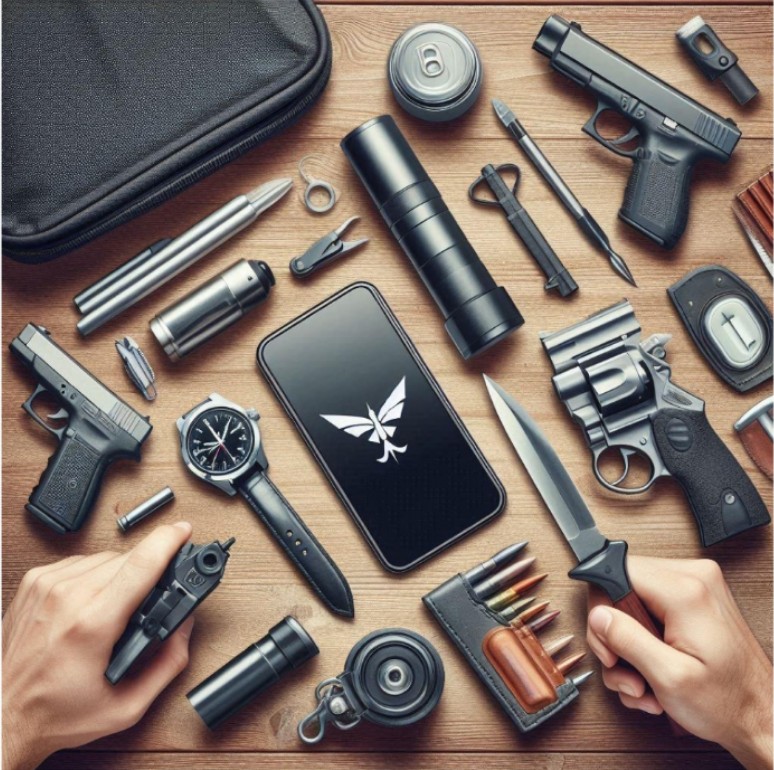Disclaimer: While this article provides general information, it is essential to consult with local laws and regulations regarding self-defense tools. Laws vary significantly by state and jurisdiction. This article does not constitute legal advice.
As a seasoned self-defense and legal expert with years of experience in the field, I understand the growing concern for personal safety in today’s world. Many individuals are turning to self-defense tools as a means of protection. However, it’s crucial to approach this topic with knowledge and responsibility. This article aims to equip you with the essential information to use and carry self-defense tools legally and safely.
Key Highlights:
- Understanding and adhering to local laws is crucial when using or carrying self-defense tools.
- Choose a self-defense tool based on personal comfort, physical abilities, and legal restrictions.
- Proper training, situational awareness, and responsible handling are essential for safe and effective use of self-defense tools.
Image Credit Goes to Self Defence Mall
Understanding Self-Defense Tools
Before delving into the legal and safety aspects, let’s clarify what we mean by “Self Defense Tools.“ These can range from non-lethal options like pepper spray and stun guns to more lethal alternatives like firearms. It’s essential to choose a tool that aligns with your comfort level, physical capabilities, and local laws. If you’re looking to purchase self defense tools that suit your needs, there are a variety of options available to help you stay safe and secure.
The Legal Landscape
The laws governing self-defense tools vary dramatically across the United States. What’s legal in one state might be strictly prohibited in another. Therefore, understanding the specific regulations in your jurisdiction is paramount.
Key legal considerations include:
- Age restrictions: Many states impose age limits on the purchase and possession of self-defense tools.
- Permit requirements: Some states require permits or licenses to carry or use certain self-defense tools.
- Carry laws: Laws dictate where you can and cannot carry your self-defense tool. Open carry, concealed carry, and restrictions in specific locations like schools or government buildings are common regulations.
- Use of force laws: Understanding the legal justification for using self-defense is crucial. The concept of “reasonable force” is often used to determine whether your actions were lawful.
To obtain accurate and up-to-date information about the laws in your state, consult with local law enforcement or a legal professional specializing in self-defense.
Choosing the Right Self-Defense Tool
Selecting the appropriate self-defense tool is a personal decision influenced by various factors. Consider the following when making your choice:
- Your physical abilities: Some tools require physical strength or dexterity.
- Your comfort level: Choose a tool you feel confident using in a stressful situation.
- Effectiveness: Research the effectiveness of different tools against potential threats.
- Legality: Ensure the tool is legal in your jurisdiction.
- Training: Some tools require specific training for safe and effective use.
Popular self-defense tools include:
- Pepper spray: A non-lethal option that temporarily incapacitate an attacker.
- Stun guns: Another non-lethal option that delivers an electrical shock.
- Tasers: Similar to stun guns but taser guns often come with a longer range.
- Personal alarms: These devices emit a loud sound to deter attackers.
- Kubotan: A small, cylindrical self-defense tool that can be used for striking or pressure points.
- Firearms: While considered lethal force, firearms can be effective for self-defense. However, they require extensive training and responsible handling.
Safe and Effective Use of Self-Defense Tools
Proper training and practice are essential for maximizing the effectiveness and safety of any self-defense tool. Consider the following guidelines:
- Understand your tool: Familiarize yourself with the operation, limitations, and potential side effects of your chosen tool.
- Practice regularly: Regular practice builds muscle memory and increases your confidence in using the tool.
- Situational awareness: Be aware of your surroundings and potential threats.
- Avoid escalation: If possible, de-escalate a situation before resorting to using your self-defense tool.
- Follow-up: After using a self-defense tool, ensure your safety and seek medical attention if necessary.
- Legal considerations: Understand the legal implications of using your self-defense tool and be prepared to provide a detailed account of the incident.
Carrying Your Self-Defense Tool Safely
How you carry your self-defense tool can impact its accessibility and safety. Consider these factors:
- Concealed vs. open carry: Choose the carry method that aligns with your comfort level and local laws.
- Accessibility: Ensure you can quickly access your tool in case of an emergency.
- Security: Protect your tool from theft or unauthorized use.
Additional Safety Tips
- Self-defense training: Consider taking a self-defense course to learn physical techniques and situational awareness.
- Trust your instincts: If something feels wrong, trust your gut and remove yourself from the situation.
- Inform loved ones: Let your family and friends know about your self-defense plans.
- Regular maintenance: Keep your self-defense tool in good working condition.
Remember: While self-defense tools can provide a sense of security, they are not a guarantee of safety. Prevention is key. Be aware of your surroundings, avoid risky situations, and trust your instincts.
Conclusion
Incorporating self-defense tools into your personal safety plan can provide an added layer of protection. However, it’s crucial to approach this decision with careful consideration and a deep understanding of both the tools and the legal framework surrounding them.

